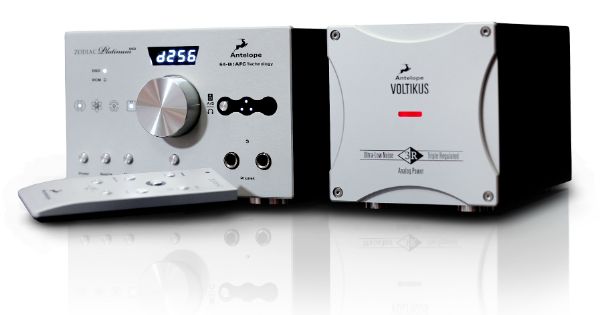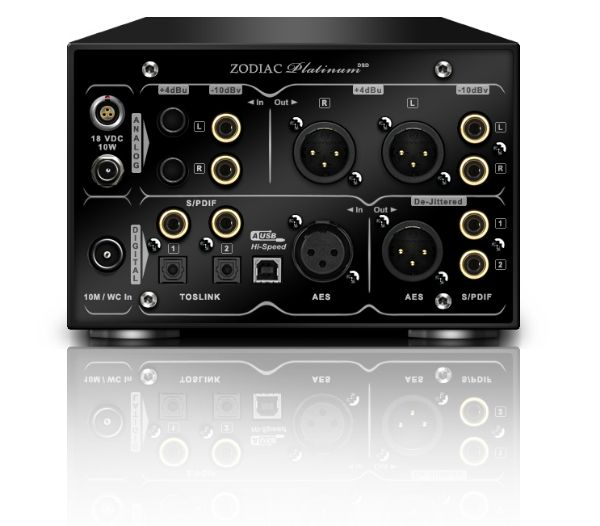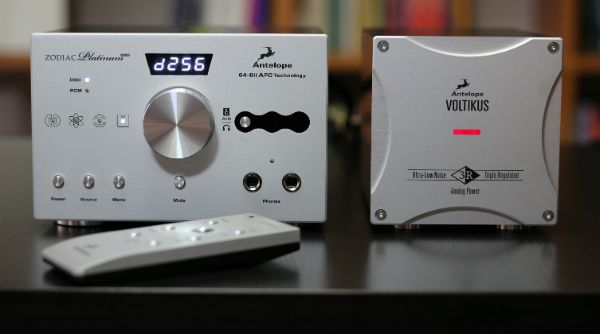![unnamed]()
![unnamed (1)]()
It is a rare thing indeed to witness the hatching of a new and enduring British high end audio brand. I hope, really hope, that this what we are seeing in the first flutterings of SW1X Audio Design of Coggeshall, Essex.
Founder Dr Slawa Roschkow’s debut commercial products are a non-oversampling DAC and a USB-S/PDIF interface, both designed and built in the UK. He has ambitions to bring further products to the SW1X line up including higher performance DACs, and open baffle speakers.
I have not examined or listened to the SW1X Audio Design USB-S/PDIF box, but have been loaned a DAC 1 Signature to play with. It is the most interesting and exciting new audio product that I have heard in quite a while. Designed and manufactured in Britain, and intended, Dr Roschkow says, to retail through a still-to-be-recruited dealer network at just a little north of £2,000, it is currently available direct for £1,000, or in ‘standard’ non-Signature guise, for £550. It supports a 24Bit/96kHz digital coaxial S/PDIF signal input only.
The DAC 1 Signature is evolutionary rather than revolutionary, but nonetheless disturbingly disruptive because of the utterly astonishing sonic value it offers. Frankly, I cannot think of another DAC at a retail price of £2,000 that I would rather listen to. At the current price of half that, the 1 Signature is a stone cold, crazy bargain that I fervently hope will not turn out to be the commercially unsustainable product that causes SW1X as a company to crash and burn. We have to trust that Dr Roschkow understands the numbers, and that he can make them work.
Set aside such anxieties though and the DAC 1 Signature makes a lot of sense. It is a NOS – non-oversampling – DAC using the resistor-to-resistor TDA1543 DAC chip and the CS8412/14 receiver chip, with a transistor making the current-to voltage conversion directly connected to a single-ended class A, zero feedback E88CC/6N6P tube output stage.
This simple configuration is a world away from the common-or-garden converters that team commercial off-the-peg Delta Sigma silicon with cheap printed circuit boards and cheaper still discrete components. It is also light years from big bucks converters that throw custom devices and massively complex circuitry at the digital to analogue conversion challenge.
The power supply to the digital and analogue stages of the DAC 1 is solid state, with liberal application of shunt voltage regulators. The employment of active I/V conversion, rather than the cheaper and much more common resistor method of conversion, plus the shunt regulators, again not at all commonplace, lies at the heart of the Signature’s creamily analogue sound. More of which in a moment.
What makes the Signature version of this new DAC still more remarkable is the quality of the components used. The less costly standard version uses silver wiring and components of a generally far higher quality than the norm. In the Signature Dr Roschkow selectively applies even more pricey parts in an otherwise identical circuit, deploying high grade devices including Black Gate and Audio Note Kaisei capacitors.
I should perhaps declare a position here which may or may not, depending upon the reader’s own preferences, make what follows worthy of consideration or dismissal. Since 2004 when I heard my first NOS DAC, I can no longer listen to over/up-sampling alternatives without having a major conniption. They all of them, to a lesser or greater degree, sound less like real music; variously short on dynamics, tonality and timing. But if over/up sampling is always a bridge over the Styx into a hellish underworld, NOS doesn’t necessarily guarantee a pass to the sunlit uplands. Some NOS DACs I’ve heard are very ho-hum too. But a few have proved sublime.
My own DAC for some years has been an Audio Note 4.1 Balanced. While in that time I have heard NOS DACs by other manufacturers, and liked some of them, the 4.1’s unforced, smooth and airy analogue presentation has kept me faithful to it.
The SW1X DAC 1 Signature is not a 4.1-killer. The DAC 1 lacks the 4.1’s output transformers, its tube rectified power supply, and the interstage transformers that Audio Note employ to impedance match the digital stage to the zero feedback output stage. Sonically it doesn’t deliver the same degree of tonal subtlety, sound stage bloom and spatial integrity, or the 4.1’s overall linearity. But, really, what should we reasonably expect from a DAC that is approximately a fifth the price of the 4.1?
![unnamed (2)]()
Dr Roschkow clearly regards Audio Note’s digital products with respect, but he also sees them as a benchmark to beat and he was greatly interested to receive independent feedback on how that quest might be progressing. DAC 1 Vs 4.1 was not a fair fight. But with the aid of the ‘wam’s George47 who kindly loaned his own £2,500 Audio Note DAC 2.1, I was able to arrange a more balanced contest.
The SW1X DAC 1 Signature was pretty much virginal when it arrived. After several days of being left permanently switched on it became more open and airy, and the bass firmed up. From the off it proved a beast of a box dynamically, with a punchy and very free-flowing delivery that made uncompressed recorded material sound lively, un-sat-on and, well, delightfully smooth and analogue, in a way that far surpassed the results from any non-NOS DAC that I have heard.
The AN 2.1 has a darker, more brooding sonic aesthetic, but the DAC 1 doesn’t deliver quite as much low level detail, with the bass in particular sounding marginally less tonally rich, informative and correctly tight than that provided by the AN 2.1. The DAC 1 sound stage too, in comparison to that of the AN 2.1, remained resolutely less expansive, portraying voices, and instruments, and the recorded space, smaller than those thrown by the Audio Note DAC. Where the DAC 1 does better than its slightly more costly rival is in the area of openness and top end extension, delivering a performance that on some material proves really quite beguiling. I can imagine how many potential buyers, perhaps those in particular who listen to folk and jazz, will find the DAC 1’s extra apparent extension and lightness of touch very attractive.
After having it here and enjoying it greatly for two weeks I sent the DAC 1 away for a short holiday in George47’s system. Ever curious, he pitted it and his now repatriated AN 2.1 against a Metrum Octave, a NOS DAC that has won particularly glowing reviews from a number of publications. He found that both the DAC 1 and the AN 2.1 delivered a notably more dynamic, less edgy, smoother, more analogue presentation that the Metrum.
I am quite prepared to believe that I didn’t hear quite the best from the DAC 1 Signature. The liberal use of Black Gates in its circuitry implies an extended settling in period; they are recognised for taking as much as several hundred hours to stabilise. Even so, I found the DAC 1 exciting. Dr Roschkow has combined thoughtful and knowing design tweaks to established NOS DAC topology, and has implemented the circuit using seriously quality components and an impressive build standard. The design intelligence and component selection together result in a sonically very compelling package that even at a soon-to-be RRP of just over £2,000 will set a new price/performance standard of serious appeal to buyers for whom analogue-ness is paramount. It follows that at the current price of just £1,000, the SW1X DAC 1 Signature is, as I said at the start, a crazy, stone-cold bargain.
However, what excites me so much about Dr Roschkow’s enterprise – and is the reason I so fervently hope that he can make a commercial go of it – is not the currently astonishingly low price of one box, but what the SW1X Audio Design approach presages. Dr Roschkow is working on still more advanced and sophisticated iterations of the same DAC digital circuit design, using tubed power supplies, custom transformers and alternative even higher quality tubed output stages, one of which will feature the glorious 45 triode. If these still-in-development products couple linear performance increases with prices that also increase linearly, then truly high-end digital is soon to become more affordable.
SW1X Audio Design DAC 1 Signature
Manufacturer:
SW1X Audio Design
Dr. Slawa Roschkow
+44 13 7656 2402
roschkow@clartes.co.uk
http://sw1xad.co.uk/







































